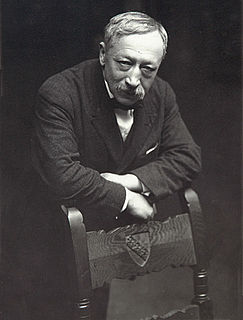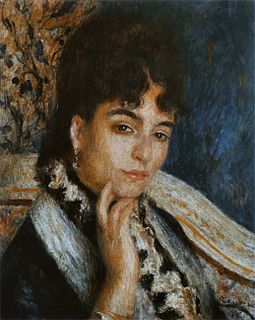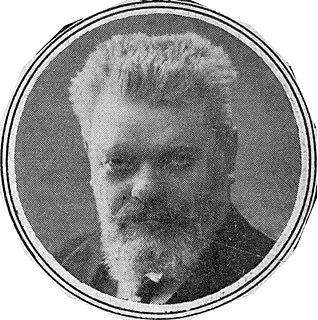
La Revue blanche was a French art and literary magazine run between 1889 and 1903. Some of the greatest writers and artists of the time were its collaborators.

La Revue blanche was a French art and literary magazine run between 1889 and 1903. Some of the greatest writers and artists of the time were its collaborators.
The Revue blanche was founded in Liège in 1889 and run by the Natanson brothers (Alexander, Thaddeus and Louis-Alfred, aka "Alfred Athis"). In 1891, the magazine moved to Paris where it rivaled the Mercure de France , hence its name, which served to mark the difference with the Mercure's purple cover. During the early years the magazine was associated with Marcel Proust. [1]
Thaddeus's wife, Misia, participated in the launch of the magazine and served as a model for some covers. [2] The critics Lucien Muhlfeld and Félix Fénéon from 1896 to 1903 served as secretaries, as well as Léon Blum himself.
The journal served as a representative for the cultural and artistic intelligentsia of the time. Starting from 1898, at the instigation of Lucien Herr, it contributed to the Dreyfus affair, [3] siding with the captain accused of treason. During this period the magazine developed close relations with Emile Durkheim. [3]
Octave Mirbeau published his Diary of a Chambermaid in serial form in the Revue blanche in 1900.
The Revue blanche disappeared in 1903 after 237 issues. [4]

Anatole France was a French poet, journalist, and novelist with several best-sellers. Ironic and skeptical, he was considered in his day the ideal French man of letters. He was a member of the Académie française, and won the 1921 Nobel Prize in Literature "in recognition of his brilliant literary achievements, characterized as they are by a nobility of style, a profound human sympathy, grace, and a true Gallic temperament".

Valentin Louis Georges Eugène Marcel Proust was a French novelist, critic, and essayist who authored the monumental novel À la recherche du temps perdu, published in seven parts between 1913 and 1927. He is considered by critics and writers to be one of the most influential authors of the 20th century.

Paul Fort was a French poet associated with the Symbolist movement. At the age of 18, reacting against the Naturalistic theatre, Fort founded the Théâtre d'Art (1890–93). He also founded and edited the literary reviews Livre d'Art with Alfred Jarry and Vers et Prose (1905–14) with poet Guillaume Apollinaire, which published the work of Paul Valéry and other important Symbolist writers. Fort is notable for his enormous volume of poetry, having published more than thirty volumes of ballads and, according to Amy Lowell for creating the polyphonic prose form in his 'Ballades francaises'.

The Prix Goncourt is a prize in French literature, given by the académie Goncourt to the author of "the best and most imaginative prose work of the year". Four other prizes are also awarded: prix Goncourt du Premier Roman, prix Goncourt de la Nouvelle, prix Goncourt de la Poésie (poetry) and prix Goncourt de la Biographie (biography). Of the "big six" French literary awards, the Prix Goncourt is the best known and most prestigious. The other major literary prizes are the Grand Prix du roman de l'Académie française, the Prix Femina, the Prix Renaudot, the Prix Interallié and the Prix Médicis.

Remy de Gourmont was a French Symbolist poet, novelist, and influential critic. He was widely read in his era, and an important influence on Blaise Cendrars and Georges Bataille. The spelling Rémy de Gourmont is incorrect, albeit common.

Gustave Kahn was a French Symbolist poet and art critic. He was also active, via publishing and essay-writing, in defining Symbolism and distinguishing it from the Decadent Movement.

Paul Charles Joseph Bourget was a French novelist and critic. He was nominated for the Nobel Prize in Literature five times.

Auguste Émile Faguet was a French author and literary critic.
Éditions Gallimard is one of the leading French book publishers. The Guardian has described it as having "the best backlist in the world". In 2003 it and its subsidiaries published 1,418 titles.

La Plume was a French bi-monthly literary and artistic review. The magazine was set up in 1889 by Léon Deschamps, who edited it for ten years and was succeeded as editor by Karl Boès from 1899 to 1914. Its offices were at number 31 rue Bonaparte, Paris. From its beginning, famous artists such as Willette, Forain, Eugène Grasset, Toulouse-Lautrec, Maurice Denis, Mucha, Gauguin, Pissarro, Félicien Rops, Signac, Seurat, and Redon contributed to it. One of its most famous issues is that devoted to Le Chat noir. The magazine supported the symbolist art movement.

Émile Henri Bernard was a French Post-Impressionist painter and writer, who had artistic friendships with Vincent van Gogh, Paul Gauguin and Eugène Boch, and at a later time, Paul Cézanne. Most of his notable work was accomplished at a young age, in the years 1886 through 1897. He is also associated with Cloisonnism and Synthetism, two late 19th-century art movements. Less known is Bernard's literary work, comprising plays, poetry, and art criticism as well as art historical statements that contain first-hand information on the crucial period of modern art to which Bernard had contributed.

Mayer André Marcel Schwob, known as Marcel Schwob, was a French symbolist writer best known for his short stories and his literary influence on authors such as Jorge Luis Borges and Roberto Bolaño. He has been called a "precursor of Surrealism". In addition to over a hundred short stories, he wrote journalistic articles, essays, biographies, literary reviews and analysis, translations and plays. He was extremely well known and respected during his life and notably befriended a great numbers of intellectuals and artists of the time.
The Mercure de France was originally a French gazette and literary magazine first published in the 17th century, but after several incarnations has evolved as a publisher, and is now part of the Éditions Gallimard publishing group.

Gabriel-Albert Aurier was a French poet, art critic and painter, associated with the Symbolist movement.
Henri Massis was a conservative French essayist, literary critic and literary historian.

Jean-Auguste-Gustave Binet, also known as Binet-Valmer, was a Franco-Swiss novelist and journalist. The trademark element of his style was the almost clinical precision with which he dissected the psychologies and motivations of his characters.

Julia Daudet, born Julia Allard on 13 July 1844 and died on 23 April 1940, was a French writer, poet and journalist. She was the wife and collaborator of Alphonse Daudet, mother of Léon Daudet, Lucien Daudet and Edmée Daudet.
Paterne Berrichon - the pseudonym of Pierre-Eugène Dufour, born 10 January 1855 at Issoudun and died 30 July 1922 at La Rochefoucauld - was a French poet, painter, sculptor and designer. He is best known as husband of Isabelle Rimbaud, and the brother-in-law and publisher of Arthur Rimbaud.

Léon Séché was a French poet.

Spanish Cavaliers is an 1859 oil-on-canvas painting by Édouard Manet, now in the Musée des beaux-arts de Lyon.